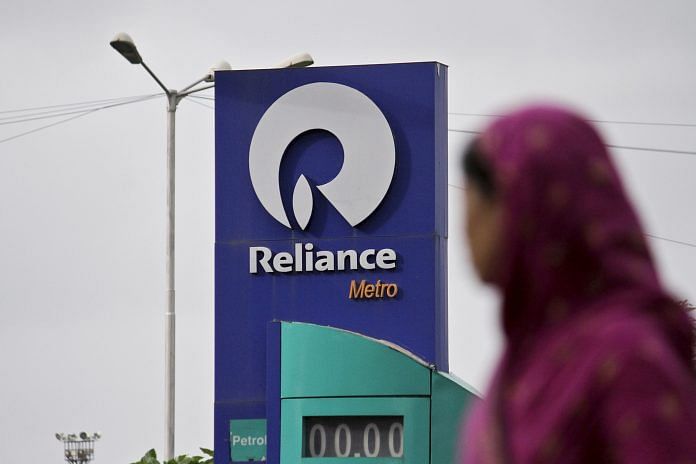If big is beautiful, oil deals don’t come much prettier than Saudi Arabian Oil Co.’s plan to buy 20% of Reliance Industries Ltd.’s petroleum business.
The transaction will give the world’s biggest oil producer a one-fifth stake in the world’s biggest oil refinery at a $75 billion enterprise value, equivalent to $15 billion for Aramco’s stake.
That’s a generous price: When Bloomberg News first reported that a deal might be in the works in April, the valuation named wasn’t much more than half of that sum. Reliance as a whole has an enterprise value of about $134 billion, including phone and retail businesses that brokerages value anywhere between $60 billion and $80 billion. At the median multiple for oil and gas deals of 6.5 to 7.0 times enterprise value to Ebitda, Reliance’s refining and chemicals businesses would collectively be worth about 30% less than it’s receiving.
Why is Saudi Aramco so happy to pay such a rich price?
One reason is, surely, that it can afford to do so. That $15 billion represents just 10 weeks’ worth of the $38 billion in first-half free cash flow Aramco posted in results Monday, a result that comes when oil prices have been weak. Overpaying for major deals isn’t a great look if you’re still lining yourself up for an initial public offering, but when your operations are gushing cash the way Aramco’s are you can afford to get a little cocky.
More important, though, is the co-dependent relationship that the world’s biggest oil exporter has with the country that’s likely to soon overtake the U.S. as the world’s biggest net importer of crude. As we’ve argued before, India’s dependence on buying oil from abroad is a problem both for its pollution-choked cities and a current account in which crude accounts for about a quarter of imports. The high oil prices that Riyadh needs to balance its budget are ones that would cut India’s sputtering GDP growth by about 3.6 percentage points, while pushing up inflation and eating into the government’s budget, too.

New Delhi is quite aware of that risk, though for now high petroleum taxes and a sluggish economy have managed to put a cap on the country’s thirst for oil. Despite domestic production that’s collapsed to minor-economy levels, imports in the first six months of this year fell by about 1.26 million metric tons, or 1.1%, from a year earlier.
Reliance’s Jamnagar refining complex does offer India a buffer of sorts, since it produces mostly for export and thus provides a natural hedge to the current account. However, Reliance Chairman Mukesh Ambani must now reposition for a world of electric cars – one that’s less dependent on Jamnagar’s traditional products of diesel and gasoline. The refinery is shifting toward producing only jet fuel and petrochemicals, Reliance said in its latest annual report, a move in keeping with Aramco’s $69 billion deal in March to buy 70% of chemicals giant Saudi Basic Industries Corp. While refining margins on polymers are also low at present because of oversupply, the ethylene-naphtha spread has improved from a near-seven-year low of $190 per ton a month ago to $394 a ton now.

Aramco’s investment also makes sense because its other plan to find a captive customer for crude in India – a mega refinery constructed jointly with India’s state refiners and Abu Dhabi National Oil Co. – was beginning to look like a white elephant. With environmental requirements and plant relocation having pushed up the required capital expenditure by 36% to $60 billion, Indian Oil Corp., Bharat Petroleum Corp. and Hindustan Petroleum Corp. won’t earn their cost of capital on the project, according to Bloomberg Intelligence analyst Kunal Agrawal.
For Reliance, the equity infusion by Aramco will help cut debt. Liabilities surged to $65 billion in the year ended March 31, according to Credit Suisse Group AG, from just $19 billion in 2015. While Reliance’s $8 billion bet on telecoms has pushed up leverage, crude payables beyond 60 days have also tripled to $6 billion, the bank said in a note this month.

A splashy investment in Jamnagar means that even if India and the world start a slow retreat from crude, Riyadh will be protected. At present, the refinery complex sources about one-quarter of its 1.4 million barrels a day of crude throughput from Saudi Arabia and the United Arab Emirates together, equivalent to about 350,000 barrels each day. As part of the deal, Aramco alone will be selling 500,000 barrels per day of crude to the plant.
That 150,000 barrel difference alone will be worth $3.6 billion a year at Aramco’s current prices of $66 a barrel. That $15 billion investment won’t take long to pay for itself. – Bloomberg.
Also read: India should be cautious of Saudi Aramco’s interest in Reliance refinery for a few reasons



